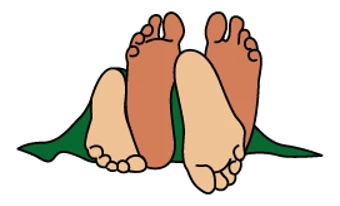
Perimenopause and arthritis: what's the connection?

We were delighted to speak to Jo Miller about the common conditions of perimenopause and arthritis. Below she answers some key questions about the connections between the two, and provides top tips for those who feel like they might be experiencing both.
Can you explain what the different types of arthritis are?
There are more than 140 different types of arthritis.
Osteoarthritis (OA) is the most common form of arthritis. It affects the whole joint, particularly the protective cushion of the cartilage covering the ends of the bones. Although often described as due to ‘wear and tear’, it is the result of several factors including inflammation, injury or ageing.
Rheumatoid arthritis (RA) is a common inflammatory form of arthritis that causes painful, stiff, swollen joints and can affect people of any age. It can occur at any age but most often develops between the ages of 25 and 50 and affects more women than men. Other forms of inflammatory arthritis include psoriatic arthritis, ankylosing spondylitis and lupus.
Gout is the second most common form of arthritis in New Zealand and more prevalent here than anywhere else in the world. Māori and Pasifika people are particularly affected, mainly due to genetic factors. Gout causes sudden attacks of severe pain and swelling in the joints, usually starting in the big toe.
What's the connection between rheumatoid arthritis and perimenopause?
Hormones are thought to play a key role in the development of RA, which commonly develops during periods of hormonal change for women, such as perimenopause. In addition, the development and progression of rheumatoid arthritis also encompasses a range of genetic and environmental factors. Stress is now recognised as an important risk factor for the onset and development of disease activity in RA. Anecdotally, women also often talk of their RA coming on after periods of stress or physical or mental trauma, or following an illness, and during perimenopause. While studies have backed up some of these claims, it is still not clear why an event may trigger RA at a point in time for a particular individual.
What do we know about the role of oestrogen in arthritis?
Oestrogen plays a protective role in joint and immune health, and its decline during perimenopause may worsen or trigger arthritis symptoms. In RA, oestrogen helps regulate immune responses, and its drop is linked to the onset of the disease, or increased disease activity and flare-ups, especially around perimenopause. In osteoarthritis (OA), oestrogen supports cartilage and bone health, so lower levels can contribute to joint degeneration and pain, particularly in postmenopausal women although much of the research is inconclusive.

How do you know if the symptoms you're experiencing are related to arthritis or menopause?
One of the few studies on perimenopause and RA from a patient perspective in the UK found an overlap and confusion of symptoms between RA and perimenopause.
Joint pain, fatigue, mood changes, and poor sleep can be symptoms of both menopause and arthritis, making it hard to tell them apart. Changes in your menstrual cycle are the clearest indication that you are in perimenopause.
Is there any connection between age at menopause and arthritis?
Yes, there is evidence that the age at menopause can influence the risk and severity of arthritis, particularly rheumatoid arthritis (RA) and osteoarthritis (OA). Women who experience early menopause (before age 40) tend to have a higher risk of developing RA and may experience more severe symptoms. Similarly, early menopause is linked to increased risk and progression of OA, probably due to earlier loss of oestrogen’s joint-protective role. Conversely, women with later menopause tend to have a lower risk or milder arthritis, thanks to prolonged exposure to oestrogen’s benefits.
Can hormone therapy help?
Hormone therapy (HT), particularly oestrogen-based treatments, may help reduce joint pain and stiffness associated with perimenopause and arthritis, especially OA. Some studies suggest that oestrogen can protect cartilage and reduce inflammation, potentially easing symptoms. Decisions about using HT should be personalised, weighing potential benefits for joint symptoms against overall health risks, and made in consultation with a healthcare provider.
What is your research about?
Perimenopause and RA each bring significant psychological, physical and social challenges, but little is known about how people experience them when they occur together or how they might better manage them. This study seeks to produce in-depth understanding of these experiences and examine what possibilities are opened up when participants are supported to inquire together about their shared experiences. The effect on everyday activities, the demands of family and careers, bodily experiences, sense of self and future possibilities remains unexplored.
Why did you choose to focus on this area of research?
There is a profound gap in research on how people with RA experience perimenopause despite most RA diagnoses happening when people are in their forties to fifties which is around the same time they experience perimenopause. The aim of the research is to find out how we can support people better during this life stage.
How can people get involved in your research?
It’s very simple. All they need to do is visit my website to register their interest. Or if they have questions, they can contact me directly (details are on the website).
How can people get support with treating and living with arthritis?
Arthritis New Zealand is a national charity that provides information, advice and support for people living with arthritis. Their website has resources and information available for anyone that needs it, you can also sign up for webinars, support groups, MyJointPain and MyRA platforms, and children’s camps.
Arthritis Assist is a free, confidential phone support service provided by Arthritis New Zealand, designed to help people with arthritis (and their whānau/supporters) live better with their condition through practical information, guidance, and emotional support.
1. Track your symptoms and see your GP or health provider
Be prepared to ask the right questions, talk about what has changed for you and what hasn’t. Ask about hormone therapy as an option for treatment.
2. Eat a plant-rich Mediterranean diet
Aim for a diet that focuses on plenty of colourful vegetables and fruit alongside wholegrains and lean protein foods like fish, chicken and legumes, with minimal alcohol and coffee.
3. Reduce smoking
Not only is smoking a leading risk factor for RA, it also amps up symptoms like hot flushes and night sweats. If you smoke, learn the best ways to quit.
4. Exercise regularly
Experiment with different types of exercise to find one that is comfortable for you. Aerobic exercise and resistance training can relieve arthritis pain, improve mobility, manage weight, and ease depression and anxiety.
5. Sleep and rest
Sleep issues are common during menopause due to night sweats and insomnia. This can impact arthritis as it can worsen inflammation and pain. Make sure you get into a good bedtime routine and use relaxation techniques if needed.
6. Manage your stress
Not only does stress affect hormone levels but it can also be a trigger for RA. Use mindfulness, breathing exercises, and meditation to alleviate stress.
7. Look after your emotional health
Talk about how you feel with family and friends or seek out support groups.



